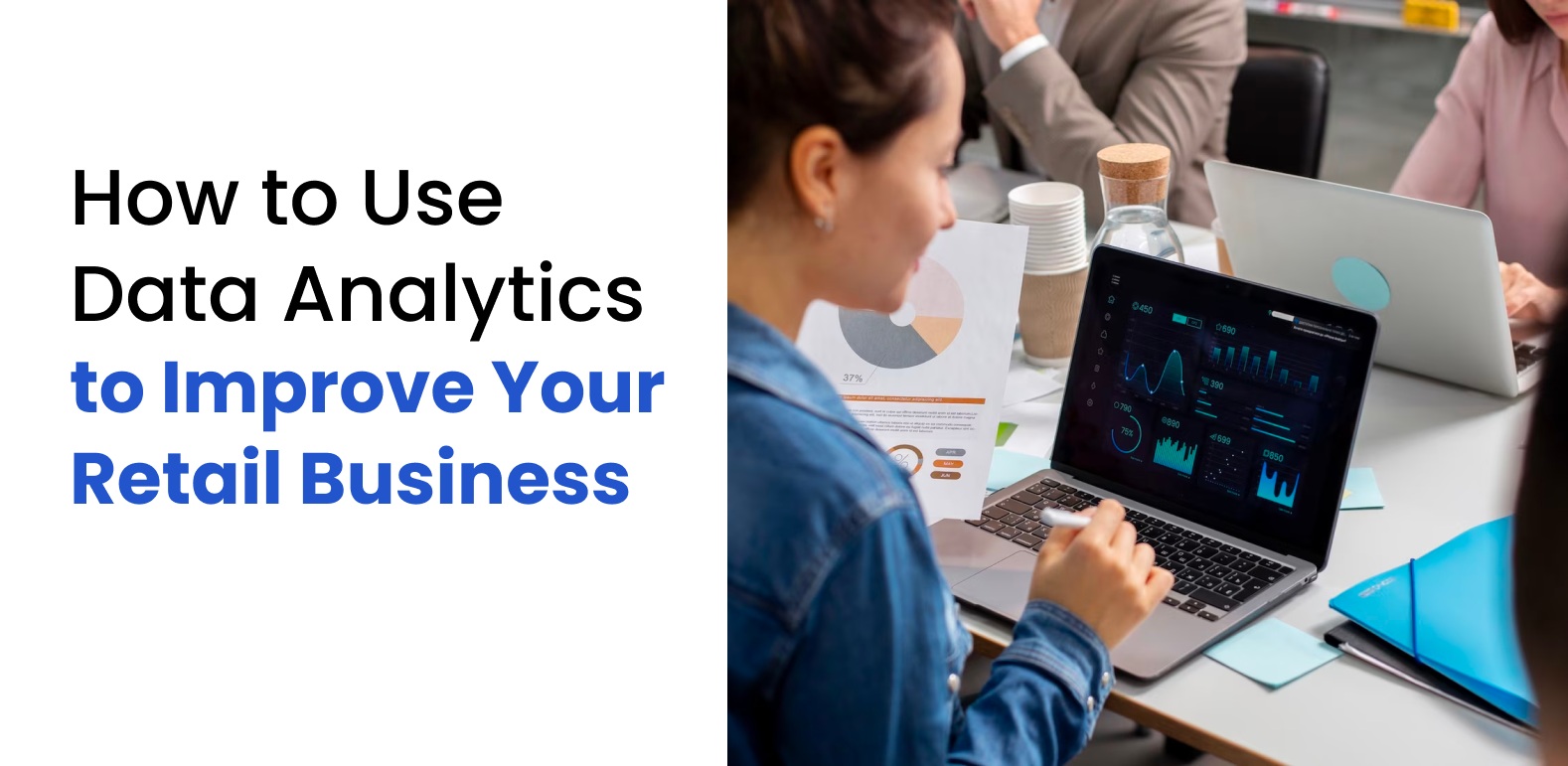How to Use Data Analytics to Improve Your Retail Business

Using data analytics can be highly beneficial for improving a retail business. It enables you to gain valuable insights into customer behavior, optimize operations, and make data-driven decisions. Here are some steps on how to effectively use data analytics to enhance your retail business:
-
Define Objectives: Start by identifying the specific goals you want to achieve through data analytics. These could include improving sales, customer retention, inventory management, or enhancing marketing campaigns. Clear objectives will guide your data analysis efforts.
-
Collect Data: Gather relevant data from various sources, including point-of-sale systems, customer databases, website analytics, social media platforms, and other relevant sources. Ensure that the data is accurate, complete, and up-to-date.
-
Centralize Data: Integrate data from different sources into a centralized database or data warehouse. This consolidation will allow you to analyze and access data easily, making it more efficient to gain insights.
-
Analyze Customer Behavior: Utilize data analytics tools to understand customer behavior patterns. Analyze purchasing trends, popular products, customer demographics, and buying habits to identify opportunities for improvement.
-
Implement Customer Segmentation: Segment your customer base based on relevant criteria, such as age, location, buying frequency, and preferences. This segmentation will help you tailor marketing strategies and promotions to specific groups, increasing their relevance and effectiveness.
-
Predictive Analytics: Use predictive analytics to forecast demand for products, identify potential churn risks, and optimize inventory management. Predictive models can help you make data-driven decisions about purchasing, stocking, and pricing products.
-
Monitor and Optimize Pricing: Analyze price elasticity and competitive pricing data to optimize product pricing. Data-driven pricing strategies can lead to increased sales and better profit margins.
-
Improve Customer Experience: Leverage data analytics to enhance the customer experience. Use feedback and customer interaction data to identify pain points and areas for improvement in the shopping process.
-
Implement Real-time Analytics: Utilize real-time analytics to monitor sales, inventory levels, and other key performance indicators (KPIs). Real-time insights allow you to respond quickly to changing market conditions and make informed decisions promptly.
-
A/B Testing: Use A/B testing for marketing campaigns, website layouts, and product displays to identify what works best for your target audience. This data-driven experimentation can lead to improved conversion rates and customer engagement.
-
Data Visualization: Present data in a visually appealing and understandable format through dashboards and reports. This helps stakeholders interpret data more effectively and make well-informed decisions.
-
Data Security and Compliance: Ensure that your data handling practices are in compliance with relevant regulations and that proper security measures are in place to protect sensitive information.
| Aspect of Retail Business | Traditional Approach | Data Analytics Approach |
|---|---|---|
| Understanding Customer Behavior | Relying on anecdotal evidence and general assumptions about customers. | Analyzing customer data, purchase history, and interactions to identify specific buying patterns and preferences. |
| Inventory Management | Manual tracking and periodic assessments of inventory levels. | Real-time inventory tracking and predictive analytics to optimize stock levels, prevent stockouts, and reduce carrying costs. |
| Pricing Strategies | Setting prices based on intuition and market trends. | Utilizing price elasticity analysis and competitive pricing data to set optimal prices for products. |
| Marketing Campaigns | Running standard promotions without precise targeting. | Segmentation of customers and personalized marketing campaigns based on preferences and behavior. |
| Customer Experience | Limited understanding of pain points and customer feedback. | Analyzing customer feedback and interaction data to identify areas for improvement and enhance the shopping experience. |
| Sales Forecasting | Relying on historical sales data without advanced analysis. | Implementing predictive analytics to forecast demand and optimize inventory management. |
| A/B Testing | Limited experimentation with marketing strategies. | Conducting A/B tests to measure the effectiveness of different marketing approaches and optimize campaigns. |
| Real-time Decision Making | Reactive decision-making based on delayed reports. | Utilizing real-time analytics to monitor KPIs and respond quickly to market changes. |
| Data Presentation | Basic spreadsheets and reports. | Data visualization through dashboards and interactive reports for easier interpretation. |
| Decision-making | Reliance on gut feeling and experience. | Data-driven decision-making based on insights derived from analytics. |
Remember that successful data analytics implementation requires a balance between data insights and human expertise. Embrace data-driven decision-making while also considering the expertise and intuition of experienced retail professionals in your organization. Continuous monitoring and refining of your data analytics processes will help your retail business stay competitive and improve over time.
-1.png?width=2600&height=450&name=RetailMetrixLogo%20(1)-1.png)